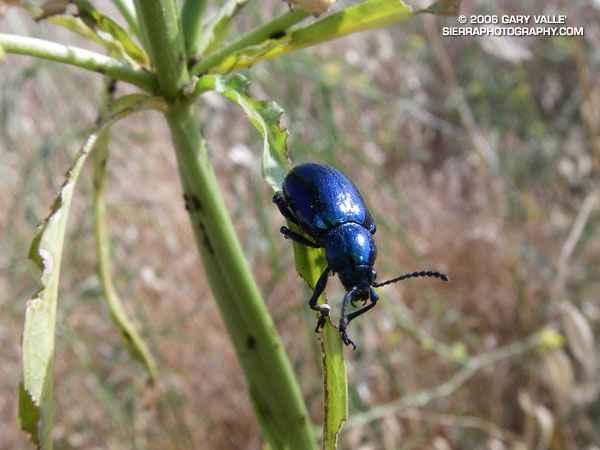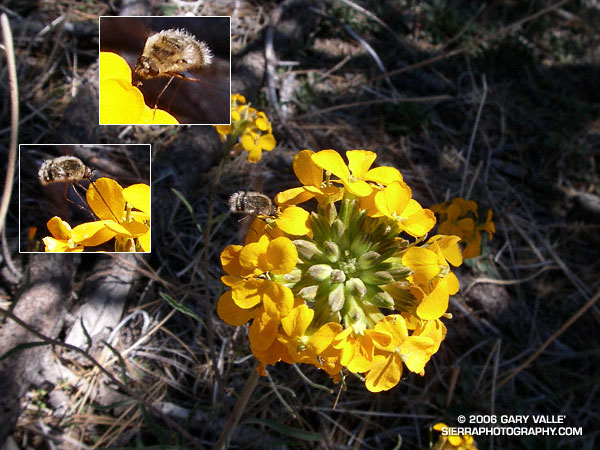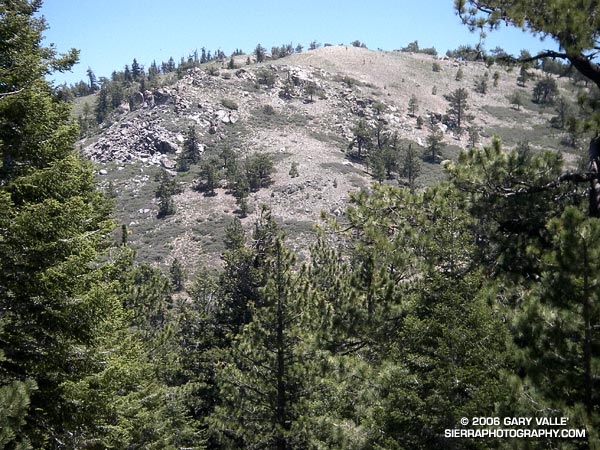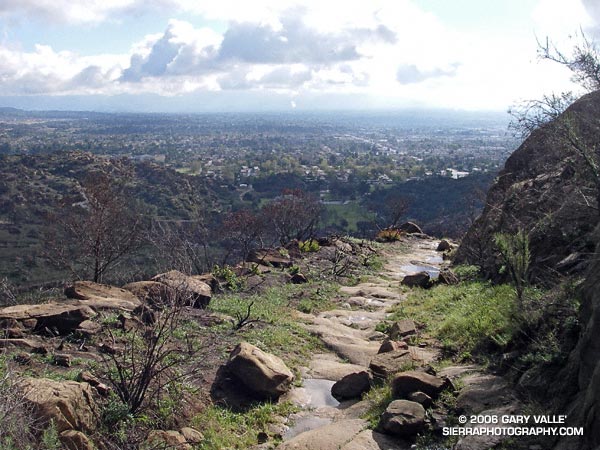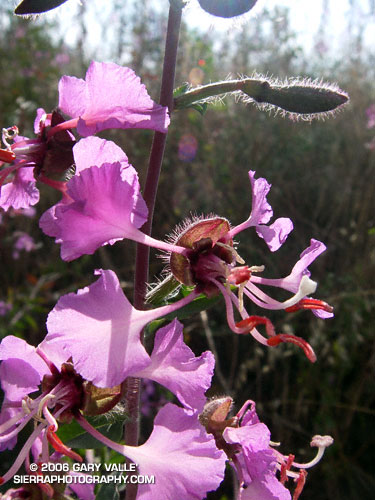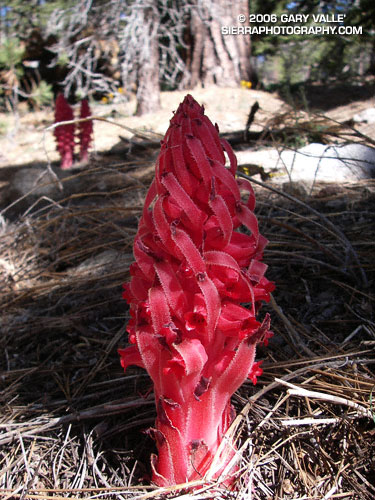
Snow Plant (Sarcodes sanguinea) is so different from the norm that each encounter is memorable. In a world where most plants are green, its startling red color and unusual structure always make an impact.
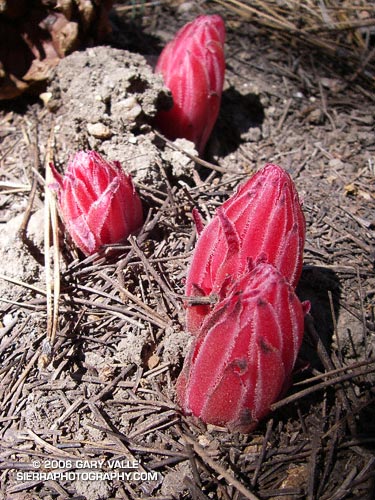
On Sunday, while running on the Tumamait Trail between Mts. Pinos and Abel, I had the opportunity to photograph Snow Plant in its early stages of above ground development. This revealed how the plant uses specialized bracts as armor while pushing up through detritus on the forest floor.
A bract is a modified leaf that is usually located near a flower, but differs in size and appearance from a normal leaf. A bract can be as simple as leaf that is reduced in size, or it can be modified to serve some other function, such as appearing to be a petal. On the Snow Plant they are relatively long, red strips that overlap and create a protective barrier as the bullet-shaped plant pushes to the surface.
Once fully erupted, the plant expands and the bracts unfurl to reveal the flowers. Over a period of a few days, the bracts continue to wither, fully exposing the flowers.
For additional snow plant photographs, see the posts Three Points – Mt. Waterman Loop and Snow Plant Still Life, and also Snow Plant on SierraPhotography.com.
Related post: Pine Drops

